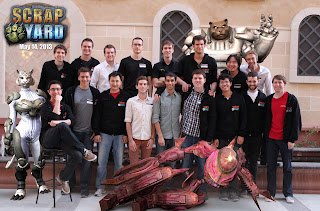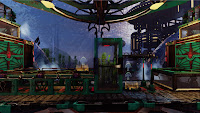There is an anime called The Sacred Blacksmith and I began a personal project a while back to recreate the home and forge portrayed in this anime in 3D. I have been heavy into 3DS Max and UE4 for the past 4 years that I have become rusty in my Maya use. That, and I became interested in trying out Unity.
I already blocked out the scene Maya and tested it out for scale in Unity. But I didn't go very far with it. I'll be diving back into it and seeing if I can get the exterior to a good place before working on the interiors. However, Unity is a pain. I'm not a scripter, so the lack of a material editor like in UE4 hurts a lot. I guess I've been spoiled by UE4? But I did keep going. Learned how to handle lighting, understanding how post process works and the basic fundamentals. I even dabbled a bit into Playmaker. After about 3 months in it, I admit, I'm still favoring UE4. So it is very likely I will be changing gears and bringing my scene into UE4 which I am professionally familiar with. Will I go back to Unity? Very likely, just not right now.
The above is the house in the anime and my aim is to recreate that, the forge, the river, the bridge, the foliage and land all in UE4. It is likely that I'll have a few versions. One similar to the anime in the day, one at night, and one more gamified with deterioration and signs of abandonment. But we'll see where I end up. I might also just be true to the anime then look to a new project to pick up.
Unlike my portfolio work which is targeted to mobile platform, I am going to be developing this scene for pc/console allowing me to really go wild (not too wild) with post processing, real-time reflections, translucent cards and foliage and so on. Time permitting, I may even setup a FPS actor, allowing movement around the scene and into the buildings.
As I work on this I'll be posting updates.











